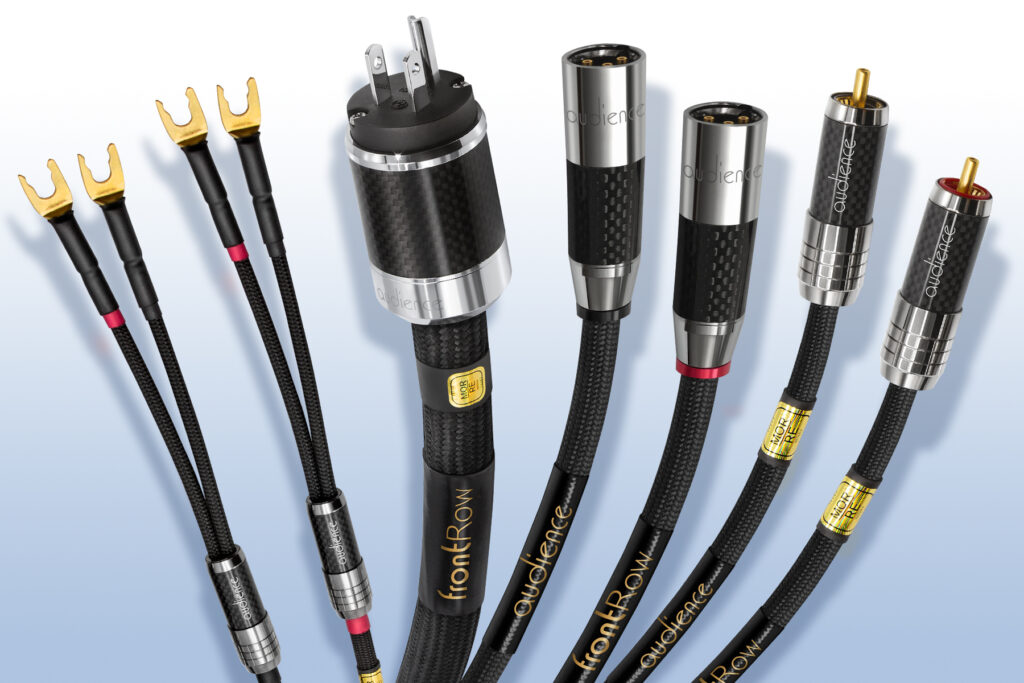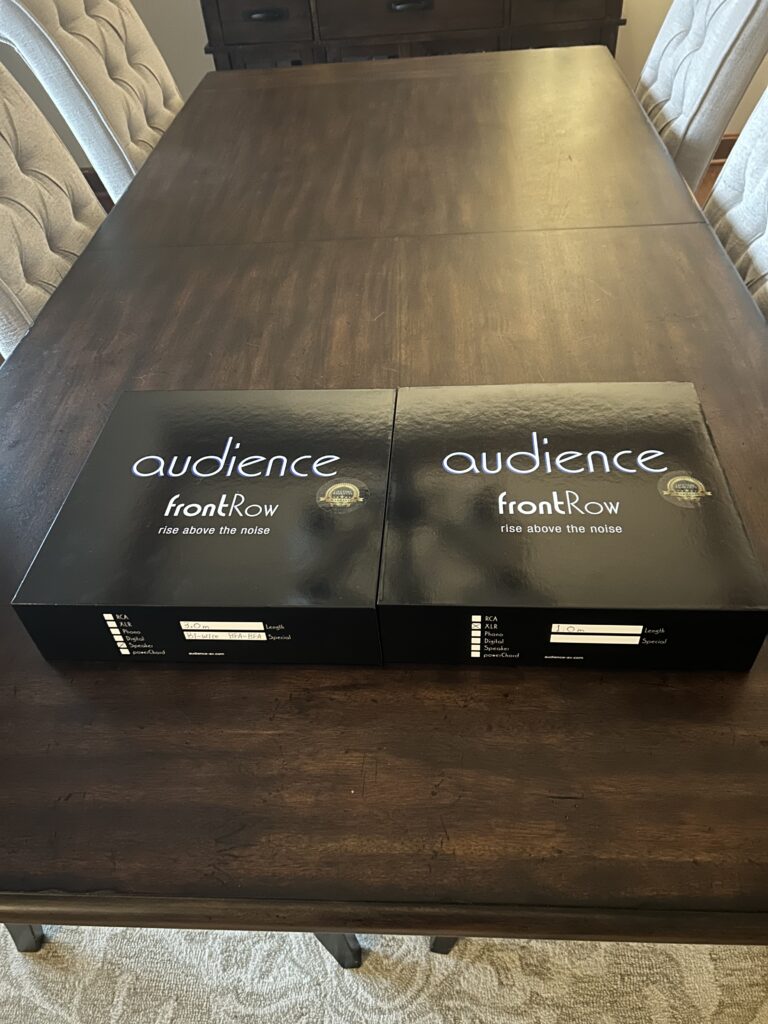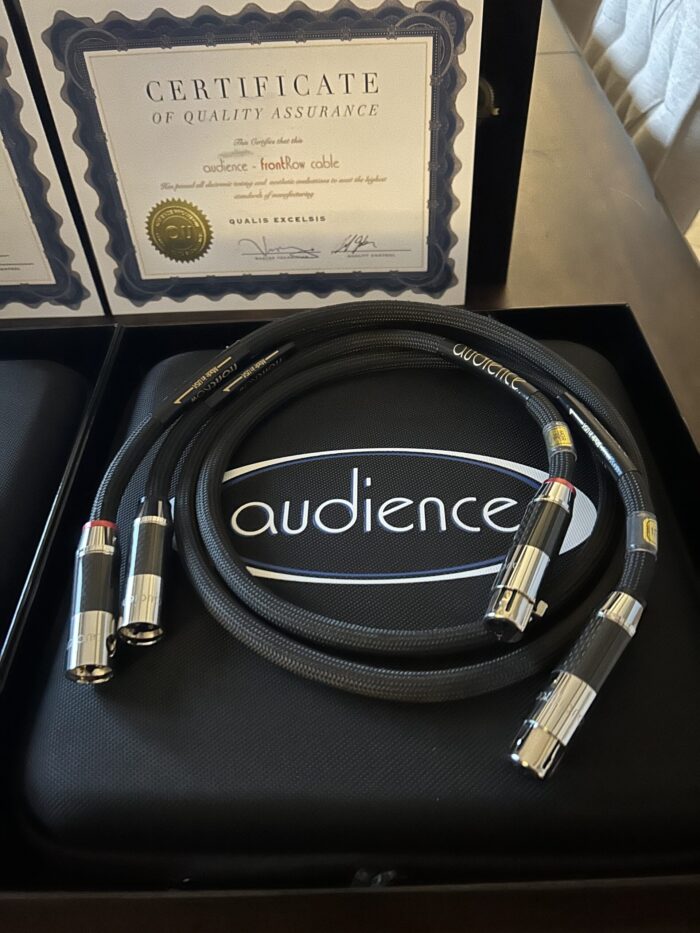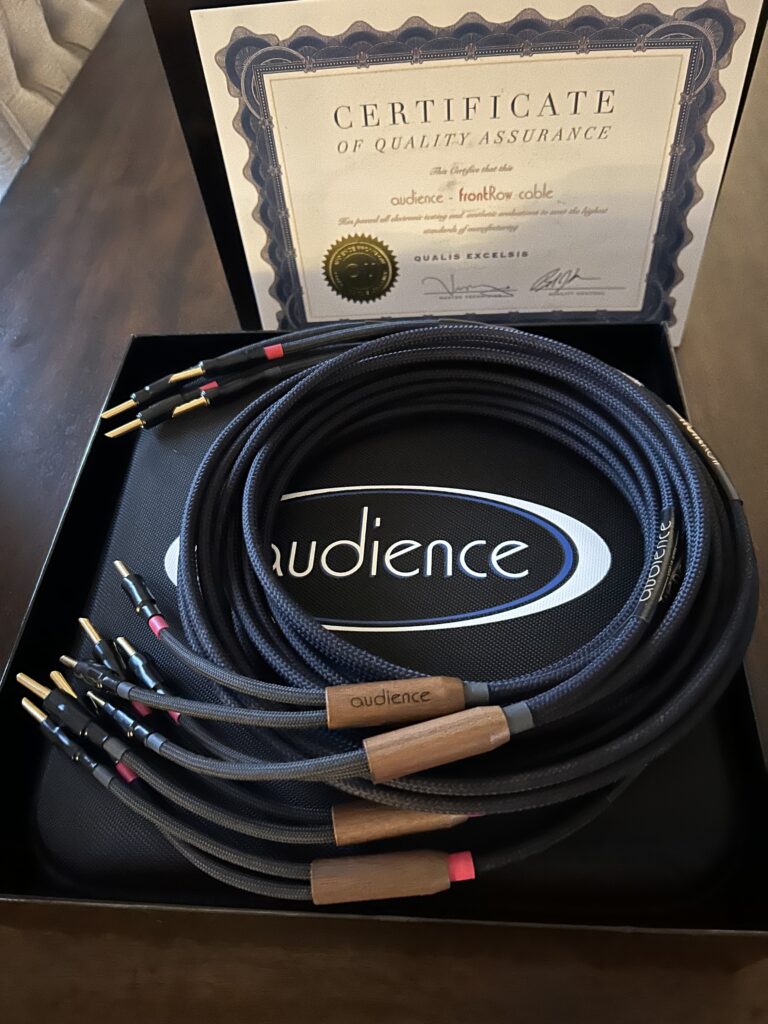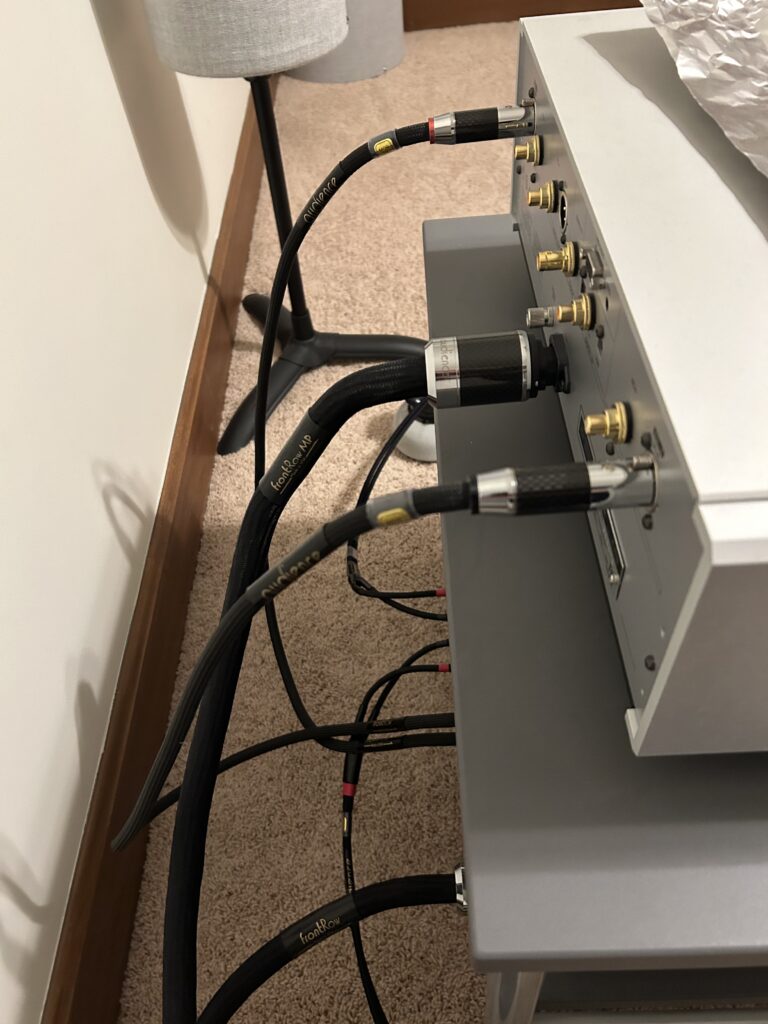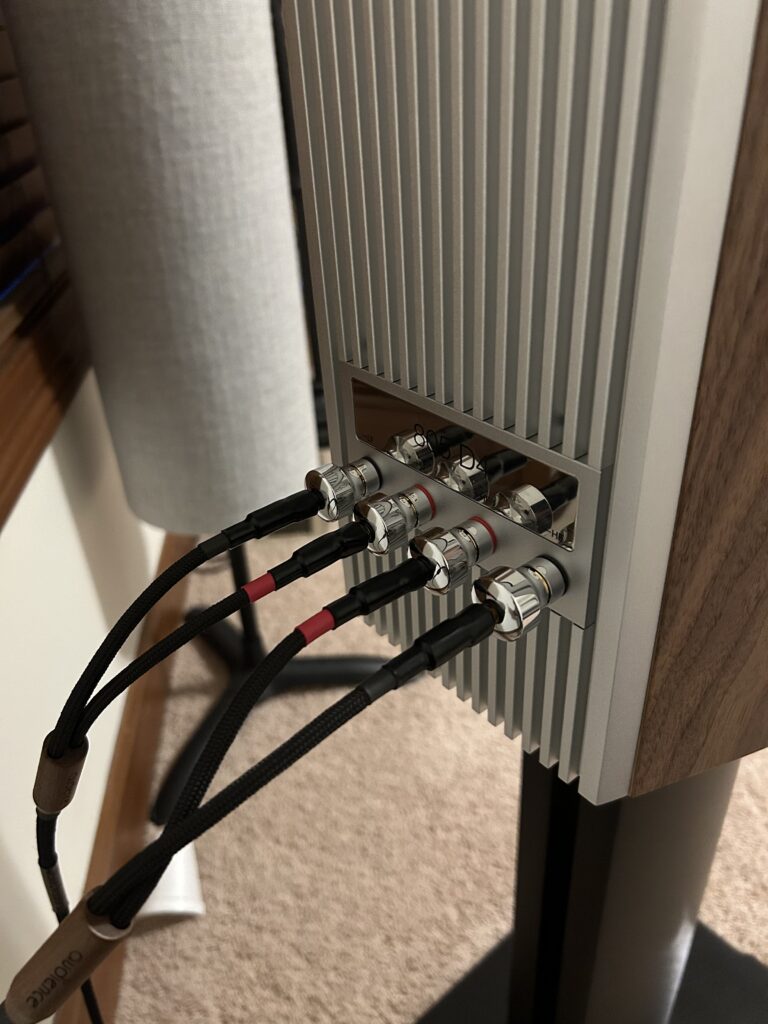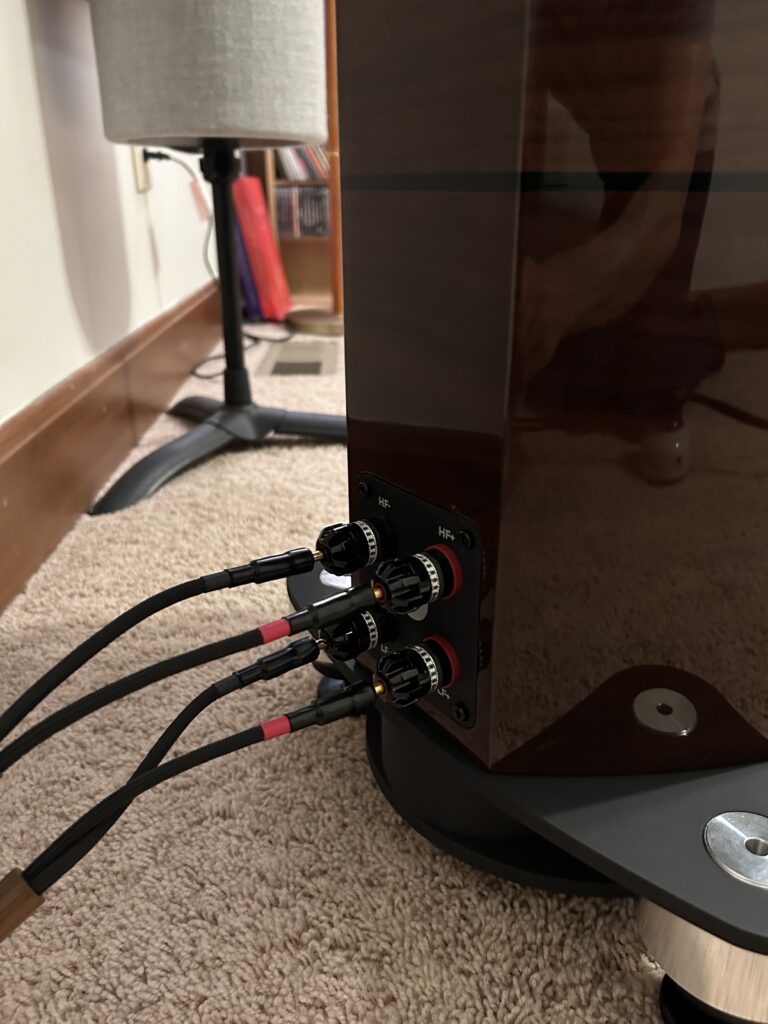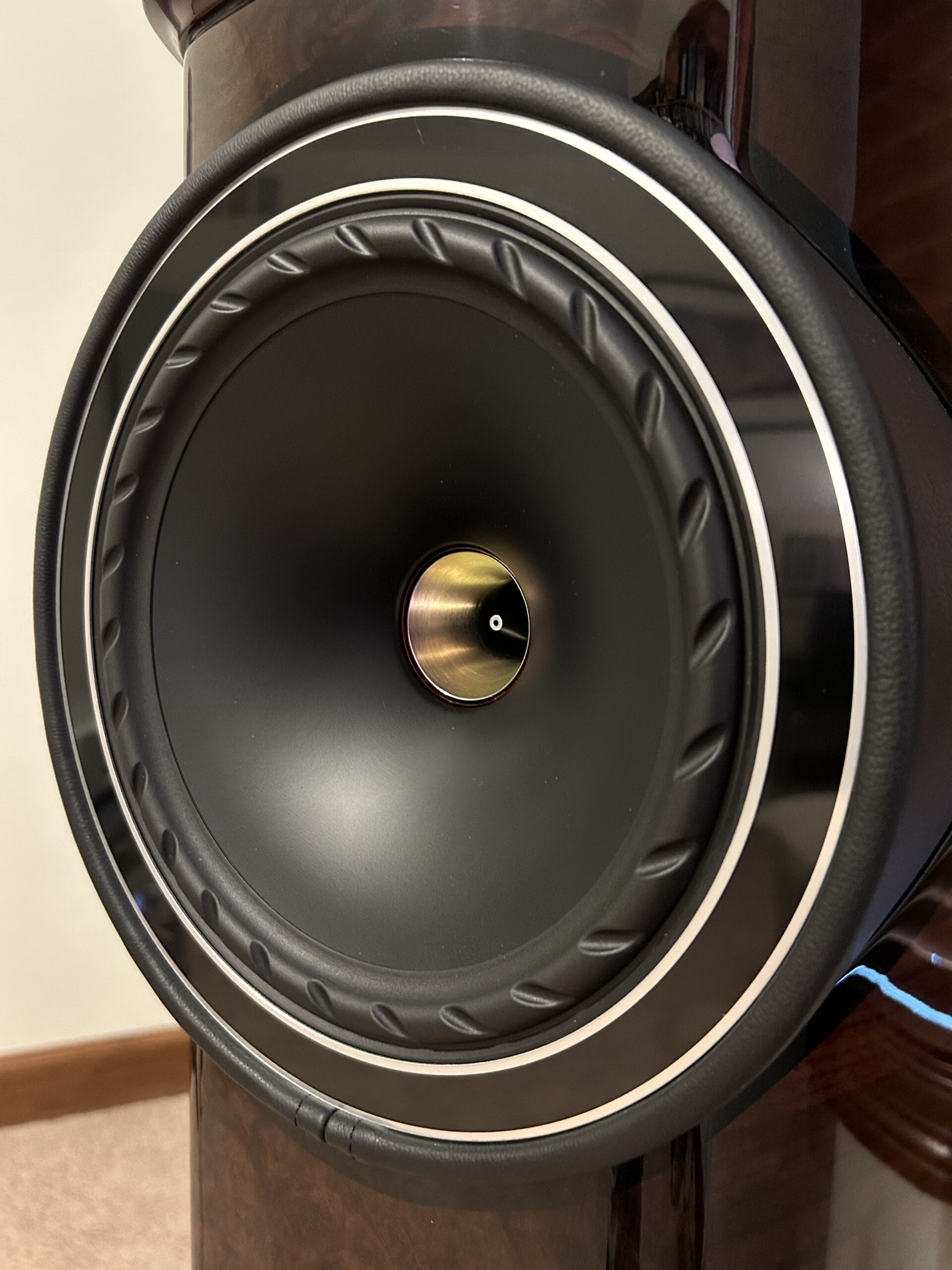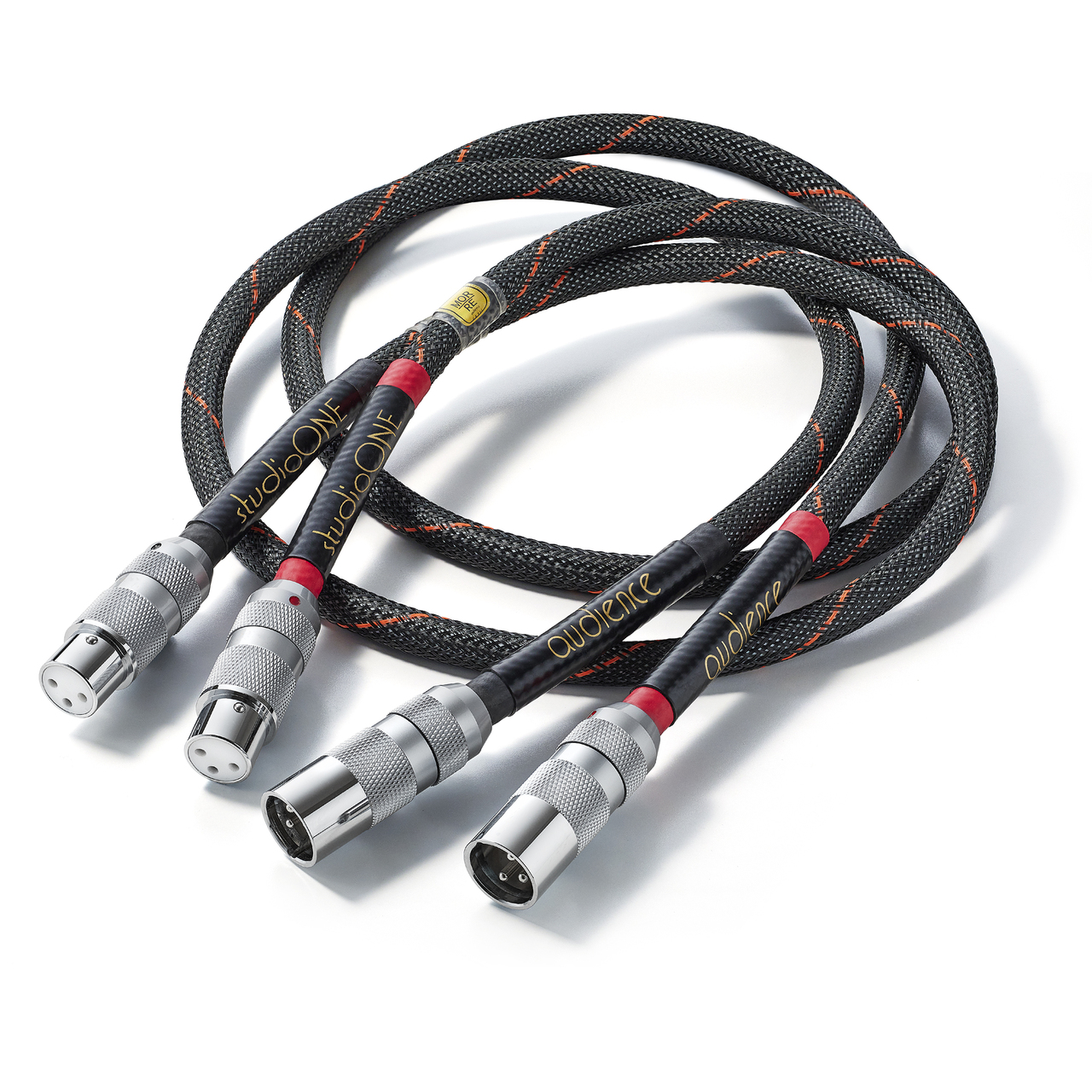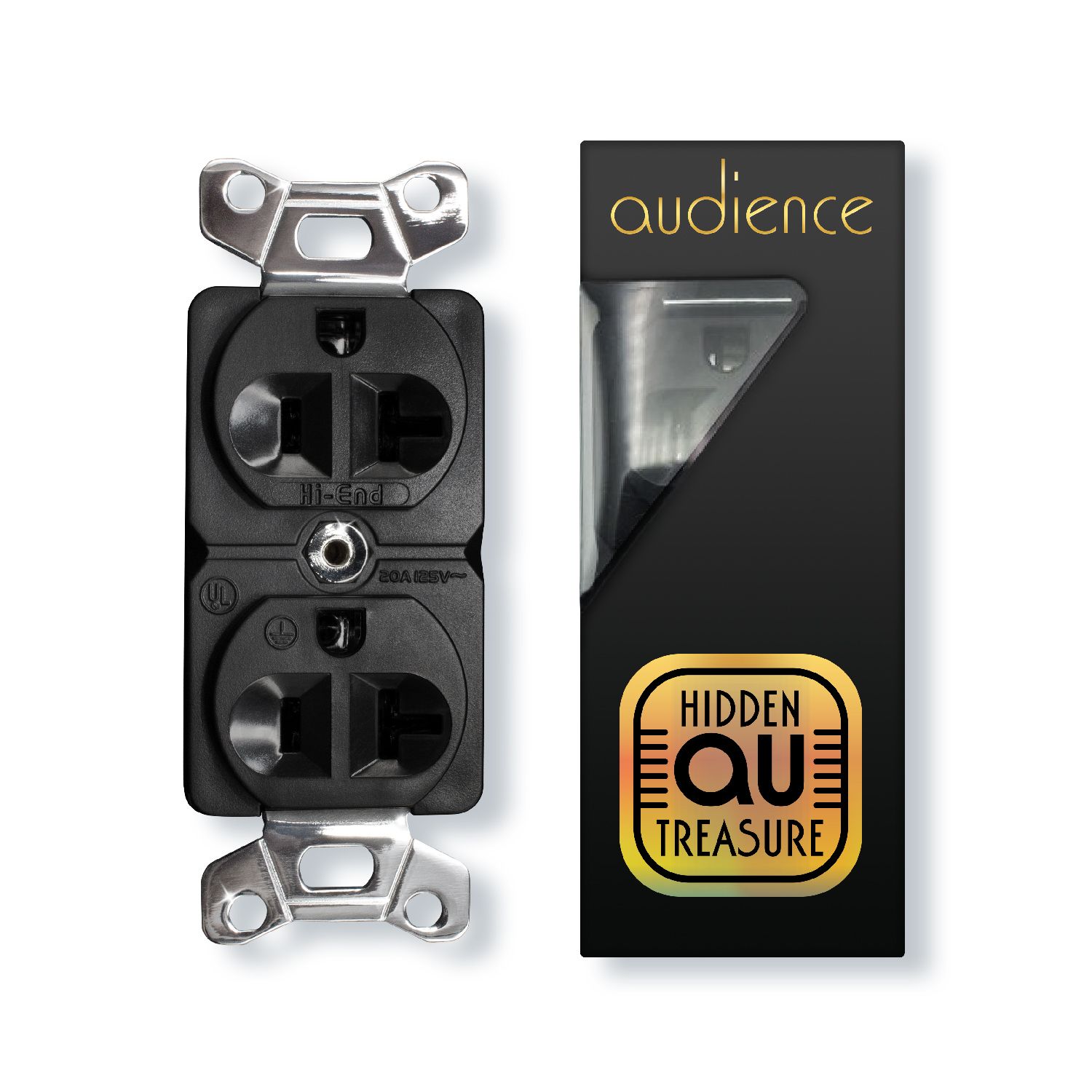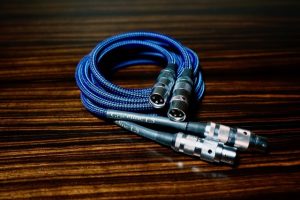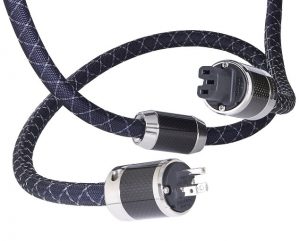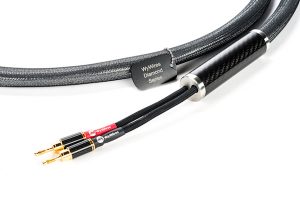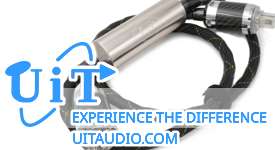Of all the elements that make up a high-end audio system, few are embroiled in the kind of controversy that surrounds cables. By and large, audiophiles seem to align with one of three primary belief systems when it comes to the impact of cabling on a system's sonic signature: those who profess that wire, generally speaking, is wire, and aside from issues with construction, termination or oxidation, largely sounds the same and should comprise an afterthought when connecting one's system; those who believe that conductor metallurgy, geometry and insulation, and their resultant effects on measurable capacitance, inductance and resistance, can and do make a difference, but that those differences are of secondary audibility compared to those evinced by variegation in components; and lastly, those who believe that, in a system of sufficient resolution, cables represent components in and of themselves and can have just as profound an effect on performance and synergy.
It might not come as much of a surprise to learn that I identify with the group that considers cables to be components. Over the course of my audiophile journey, I have given as much consideration to the selection of cables as I have to source components, amplifiers and speakers. As grounded as I am in that philosophy, I was nevertheless unprepared for the impact that Audience's frontRow HP and MP powerChords had on the performance of my system (read that review HERE). Extravagantly designed and manufactured utilizing all of Audience-AV's considerable prowess, the frontRow powerChords changed my perception of what a power cord could do for my enjoyment of music.
My transformative experience with the frontRow powerChord led me to wonder how similarly overachieving the frontRow interconnects and speaker cables might prove themselves to be. I contacted John McDonald, President of Audience AV, and within a couple of weeks, he and his team had dispatched to me a box containing a one-meter frontRow XLR interconnect and a pair of three-meter bi-wire frontRow speaker cables.
Audience has spent decades incrementally innovating and improving upon its cable offerings, but with the introduction of the frontRow series of analog, digital, and speaker cables, the company endeavored to push beyond all performance expectations previously associated with the brand. In doing so, Audience tapped into revolutionary design techniques.
Starting with materials, the frontRow cables utilize the purest copper available—99.9999% pure, oxygen-free OHNO continuous-cast copper, combined with cross-linked polyethylene (XLPE) as a dielectric. Audience also pays particular attention to conductor layout, precisely spacing, and interweaving conductors to eliminate potential sources of electromagnetic interference (EMI) and radio frequency interference (RMI). The geometry is optimized for each frontRow cable. The unbalanced interconnects utilize a dual-concentric ribbon lay, with the conductors wound in opposing directions. The speaker cables employ the same geometry as the unbalanced interconnects, albeit in a heavier-gauge configuration. The balanced interconnects, being true dual-differential in nature, diverge from their unbalanced stablemates in utilizing two axial spiral-wound ribbon connectors, side-by-side in opposing directions, with a braided shield wrapped around the outside. Audience further optimizes the performance of its frontRow cable offerings with proprietary connectors. RCA connectors utilize tellurium copper for center pins and beryllium copper for the ground contacts. XLR connectors employ tellurium copper for the male contacts and beryllium copper for the female contacts. Speaker cables are terminated with spades plated in either rhodium or gold, or banana plugs plated in beryllium copper.
Audience also brings to bear a combination of technologies collectively known as Musically Optimized Reduction of Resistive Energy (MORRE), which involve a series of treatments to mitigate the effects of cable capacitance, inductance, and resistance. MORRE involves the application of crystalline and carbon-based nano-particles to dampen and reduce vibrations that result in mechanical noise, as well as the employment of Audience's "Deep Cryo II" cryogenic treatment, which consists of a slower, more precise immersion of the cable in the cryogenic bath, for greater strengthening of conductors. Audience subjects each frontRow to extensive burn-in on a cable cooker prior to shipment. Audience further employs a Tesla Coil to apply high voltages to the cable in specific pulse patterns at specific amplitudes and ratios. Named Extreme High Voltage Process (EHVP), Audience utilizes EHVP to create predictable pathways through the crystalline grain of the conductors, thereby optimizing signal flow.
While Audience has, since the introduction of the frontRow product series, trickled MORRE technologies down to its other cable lines, the company reserves its Proprietary Metallurgy Technology (PMT) innovations for the top-tier frontRow offerings. Likening PMT to mechanical rifling in a firearm, Audience purports that PMT in its frontRow cables creates canals in the OHNO continuous-cast copper that enable a freer and more directional flow of electrons through the conductors. This improved electron flow results in improved signal transmission and reduced loss of signal integrity, ultimately leading to a lowered noise floor and greater dynamic expression.
Assembly of the frontRow product is largely done by hand and takes hours to complete. Audience conducts a series of exhaustive post-production tests and conditioning processes on each assembled frontRow cable, and every frontRow offering comes with a certificate of quality assurance, signed by the two Audience technicians responsible for assembly and testing. Every frontRow product is warranted by Audience for life. As befits its flagship status, each frontRow cable is ensconced in a sturdy black zippered case, which is further packaged within an attractive cardboard box. The connectors are protected by a mesh covering, and the entire cable comes secured in bubble wrap.
During the course of the review period, my system comprised the Esoteric K-01XD SACD player, Luxman L-509X integrated amplifier, Bowers & Wilkins 805D4 and Fyne Audio F1-8s loudspeakers, Nordost Frey 2 and Tyr 2 interconnects and speaker cables, Audience aR2p-T4 power conditioner and Hidden Treasure power outlet, with room treatments by Acoustic Sciences Corporation. All components were placed on a SolidSteel 6.2 Audio Table, with Symposium Acoustics Rollerblock Jr HDSE footers.
The frontRow interconnect and speaker cables are refreshingly flexible, and installation was easily accomplished in a manner of minutes. In spite of its extensive burn-in on Audience's cable cooker, the frontRow cables' initial performance was underwhelming, being tonally murky, and dynamically and spatially compressed. Within a week, however, the frontRows began to open up, and after 200 hours of play, had fully settled in.
Given my experience with the frontRow powerChords, I went into my evaluation of the frontRow interconnects and speaker cables with high expectations. I wasn't let down. My first impression of the frontRow cables inserted into my system was one of unbridled transparency. The flagship Audience cables seemingly eliminated all sources of noise and distortion, affording me an unparalleled level of insight into recordings.
Jazz Impressions of Japan (Legacy 88697491952), recorded by the Dave Brubeck Quartet, represents a musical diary of sorts, capturing the group's recollections of Japan during a tour of the country in 1964. The recording is lush and intimate, but it wasn't until I had added the frontRow cables that I heard newly-revealed details, such as Paul Desmond's breaths taken while playing the saxophone on "Fujiyama," or the burnished glow and air around Joe Morello's cymbal work on "Tokyo Traffic." The tremendous resolution on offer lent the performance a sense of vibrancy and directness that connected me to the musical event in a profound way. Chuck Greenberg's lyricon playing on "No Long Goodbyes" from his From a Blue Planet release (Gold Castle D2-71362) was similarly reproduced with a clarity and an intimacy that was goosebump-inducing, and when he and his supporting band cut loose on "Two Headed Alarm Clock," I could easily follow each instrument, juxtaposed as they were against one another, and against a backdrop of myriad percussion instruments.
Soundstaging and imaging benefited tremendously from the frontRow's transparency and truthfulness. Mr. Gone (Columbia 468208 2) by Weather Report is a unique album in the band's discography. Heavy on Josef Zawinul's keyboard work, and light on Wayne Shorter's improvisational saxophone playing, the album plays more like a collage of electronic sound experiments. With the frontRow cables underpinning my system, I was able to more easily discern Shorter's sax contributions, despite his instrument being buried deep in the mix. And thanks to the frontRow's rhythmic prowess, Jaco Pastorious' masterful bass playing on "Punk Jazz" danced through the soundstage like a dervish. Likewise, listening to the White Stripes' third release, White Blood Cells (V2 - 63881-27124-2), I was struck by the cavernous soundstage. Jack White and Meg White recorded the record very quickly, with few overdubs and little post-production manipulation, resulting in an in-the-studio motif that the Audience cables helped reproduce with aplomb. I'm accustomed to my system bringing performers into my room, something at which it excels; with the frontRow cables, however, my system transported me to the Whites' Detroit recording studio, which was a novel (and trippy) experience for me. Image layering and image specificity were also consummately served by the frontRow's resolving powers. Listening to "The Last Assembly" from The Kinks' Schoolboys in Disgrace (Rhino R2 70937) CD, Ray Davies' vocal was fleshed out and tactile, and clearly out front and delineated from the massed backing vocals. The frontRows surpassed other cables I've experienced in their ability to layer the soundstage, with images popping out of the performance in bas-relief fashion, leading to a multi-dimensional representation of height, width, and depth. Anisa Romero's vocal on "Deep Sunless Sea" from Sky Cries Mary's This Timeless Turning CD (World Domination Recordings WD0018-2) rose above the busy mix and moved closer to me, lending her plaintive warbling a sense of urgency I had not experienced in prior listening sessions with other cables.
The frontRow's supreme transparency transformed the dynamic performance of my system. Due to the absence of noise, distortion, and grunge, dynamic contrasts were more pronounced. The flagship Audience cables were an absolute boon to compressed recordings. Listening to the SACD of Genesis' The Lamb Lies Down on Broadway (Virgin TOGP-15024 25), whose dynamic contrasts are truncated, I reveled in the explosiveness of the myriad sound effects on "The Waiting Room," and the thunderous crescendos at the climax of "Anyway." The frontRow cables reinvigorated this recording, adding life and light to a mastering that I've always known to be flat. Microdynamics were also superbly rendered, allowing recordings to breathe. Maddy Prior's subtle vocal inflections on "Marigold/Harvest Home" from Steeleye Span's Sails of Silver (Park Records PRKCD40) were imbued with nuance and lifelike insight. If music truly lives in the spaces between notes, the frontRows render these interstitials with conviction.
Tonally, Audience cables have always struck a clever balance between neutrality and warmth, being true to the source while avoiding sterility. The frontRow cables carried on this tradition, albeit with a few new twists. Audience's strength has always been in the midrange, and the frontRow cables elevated this strength to a superlative level. Vocals and other midrange instruments were immaculately rendered, albeit without the subtle warmth of Audience's prior offerings, which, if truth be told, was a coloration, albeit one that was minor (and pleasant). The frontRow cables played it straight, yet still managed to convey richness and bloom where warranted. I basked in the texture and nuance afforded Ian Anderson's sardonic vocals on "Up to Me" from Jethro Tull's seminal Aqualung CD (Chrysalis 0825646146611). Similarly, Joni Mitchell's haunting singing on "The Last Time I Saw Richard," from her Blue release, newly-remastered for SACD by Mobile Fidelity (UDSACD 2269), was rendered with perspicacity, suppleness, and a golden-hued warmth that made the performance new for me, despite the number of times I've listened to it.
The frontRow cables excelled at their reproduction of the frequency extremes. The frontRows played back high-frequency instruments with consummate air, extension, and clarity, and without any accompanying grain, grit or brightness. Elvin Jones' cymbal work on "Outlaws" from his Bill Frisell with Dave Holland and Elvin Jones CD (Nonesuch 79624-2) had a condign mix of bite and burnish, and was played back with seemingly endless air and extension. And Dave Holland's bass playing was supple and rhythmic, with propulsive drive. The frontRows' bass was chameleonic in nature, adding no innate editorializing to the musical message. The frontRows imparted no artificial warming-up of the rather thin mix of Talking Heads' More Songs About Buildings and Food (Sire 8122 73298 2), but hammered home the late Mark Shreeve's subterranean sequencer work on Redshift's Turning Towards Us release (Distant Sun DS010).
It's natural for reviewers to dissect the sonic attributes of components or cables added to our systems, compartmentalizing the performance into its constituent parts, but in the case of Audience's frontRow cables, there was a gestalt aspect to their reproduction of music that warrants mention. I touched earlier upon the vibrancy of the frontRow cables, but it goes deeper than that; there was a vitality, an immediacy, an immersive aspect to the frontRows that made every listening session a captivating event. And I know what you're thinking—all that intensity must become overwhelming over time. But in the case of Audience's flagship cables, nothing could be further from the truth. There was a complete absence of listening fatigue; indeed, with the incredible insight into music performances afforded by the frontRows, I was compelled to pull out recording after recording.
How about downsides? Sonically speaking, none. I've owned and/or reviewed numerous high-end cables, some pricier than the Audience designs, but none have brought me closer to the performers than the frontRows. From an appearance perspective, the frontRows avoid ostentation and the overbuilt nature and glitz of some competing designs; the frontRows will not impress visiting audiophiles, at least until the music starts.
I was able to compare the Audience frontRow interconnects and speaker cables to Nordost's Tyr 2 offerings. Employing silver-plated oxygen-free-copper (OFC) conductors with Micro Mono-Filament construction for the speaker cables and Dual Micro Mono-Filament construction for the interconnects, the Tyr 2 cables represent the premium offering in Nordost's Norse lineup. Priced at $3400 for a one-meter interconnect pair and $10,300 for a three-meter speaker cable pair, the Tyr 2s are direct competitors to Audience's frontRows. While both cables series shared commonalities—tonal neutrality and faithfulness to the source—they diverged in a few key areas. The Nordost cables placed images further back in the soundstage, creating a little more distance between performers and listener, albeit with reduced layering of images, whereas the Audience cables were a little more upfront in their presentation, with better layering and three-dimensionality. The Tyr 2 cables were a little warmer and rounder in the mid-bass, with the frontRow cables being more lithe and taut in this same frequency range. Both the Nordost and Audience cables excelled at clarity, but I was surprised by the frontRows' superiority in their handling of transients, reproducing the initial attack and resultant decay with greater insight. While both the Tyr 2 and frontRow cables were engaging, I was entranced by the immersive nature of the frontRows, as they drew me into the musical performance in a way I've not experienced with other cable offerings.
It's been decades since I've been disabused of the notion that cables are mere accessories, but even so, I found myself utterly captivated by the transformation Audience's frontRow interconnects and speaker cables had on the performance of my system and its playback of music. From holographic sound-staging to unfettered dynamic expression, the frontRow cables allowed my music to breathe in ways I couldn't have imagined had I not experienced them first-hand. "Rise Above the Noise" is Audience's tagline for its products, and with the frontRow cables, the company could not have selected a more veracious motto. The flagship Audience cables peeled back layers of distortion and grit, revealing more of the underlying musical event and bringing me closer to the experience itself. In all my years of listening to and reviewing audio cables, I've never heard anything that approached the level of performance that Audience has engineered into its frontRow offerings.
frontRow Interconnects
Retail: $3300 - 1-meter pair RCA / single-ended; $3800 - XLR / balanced
frontRow Loudspeaker cables
Retail: $5500 3-meter pair single-wire; $11400 bi-wire
Audience AV




